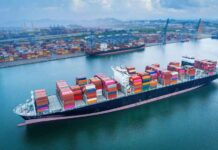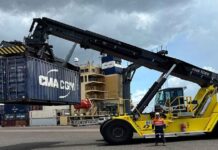Extreme weather is an ever-present hurdle for supply chains, exposing them to severe operational disruptions that require proactive planning and continuous adaptation. These challenges are particularly significant for global supply chains, which face a host of issues ranging from fluctuating demand to resource shortages. To ensure stability, companies must build supply chain resilience—a strategy that enables businesses to withstand the adverse effects of unexpected events, including extreme weather.
The impact of severe weather conditions on supply chains is multi-faceted. For instance, extreme weather often triggers changes in buying patterns, which in turn lead to shifts in product demand. As customer expectations fluctuate, supply chains must become more agile to meet delivery deadlines and ensure that their logistics infrastructure is prepared for sudden changes. Extreme conditions can also strain critical resources, such as electricity for heating or cooling, putting additional pressure on manufacturers and distributors alike. These challenges highlight the need for robust resiliency plans to mitigate materials shortages and ensure continuity in production.
In addition to these physical challenges, technology issues frequently exacerbate the problem. The integration of digital systems into supply chains is essential, but it also opens the door to inefficiencies and vulnerabilities. According to recent reports, 89% of organizations have faced operational disruptions or failures due to technology-related problems. As such, the need to develop a resilient supply chain that leverages cutting-edge technology is paramount. Companies that implement solutions supported by artificial intelligence (AI) will be better positioned to adjust workflows in real-time, ensuring smooth execution during adverse weather events.
To effectively bolster supply chain resilience, organizations must adopt a proactive approach. This begins with building a strong operating model, which involves breaking down the supply chain into individual processes and capabilities. By dissecting these processes, businesses can develop strategies for disaster recovery, disruption response, and handling conditional variances. This foundation is critical for ensuring that supply chains can continue to operate effectively, even in the face of unpredictable external conditions.
An essential aspect of building supply chain resilience is maintaining transparency across operations. Transparency fosters accountability, enables better decision-making, and provides a clearer view of the entire supply chain. In this context, operational transparency involves both design and process transparency. Design transparency refers to the development of clear plans and scenario modeling, with AI playing a critical role in providing insights and predictions based on real-time data. Process transparency, on the other hand, focuses on tracking day-to-day activities and performance through AI-powered tools such as process mining and root-cause analysis.
Process mining, in particular, is a valuable technique for improving transparency and efficiency. It involves analyzing current operations to identify inefficiencies, bottlenecks, and deviations from expected performance. Through the use of AI, process mining can capture and interpret operational data, revealing areas where improvements are needed. This data-driven approach provides organizations with the insights required to enhance their supply chain’s resilience to external disruptions, whether those disruptions come in the form of extreme weather or other factors.
To further enhance supply chain resilience, organizations should leverage AI to monitor systems and integrate complex data sets. AI helps prioritize the right key performance indicators (KPIs) and capture best practices based on historical data. By using AI to analyze past events and industry standards, companies can develop comprehensive strategies that are better suited to withstand future disruptions.
Communication is another critical element of supply chain resilience. Proactive and reactive communication mechanisms enable supply chains to coordinate responses to disruption more effectively. By establishing clear communication channels between different supply chain stakeholders, companies can implement their resiliency plans with greater efficiency, allowing them to react quickly and decisively when faced with operational challenges.
Supply Chain Resilience also benefits from AI’s role in process intelligence, particularly when insights can be transformed into actionable steps. AI-driven process modeling allows businesses to visualize their entire workflows, mapping out key activities across departments. This capability is invaluable when it comes to predicting the ripple effects of disruptions and developing strategies to mitigate their impact. Through process modeling, businesses can identify weaknesses and re-engineer processes where necessary to improve overall resilience.
Another advantage of AI-driven process intelligence is its ability to showcase both successes and challenges experienced during an organization’s transformation journey. This continuous improvement process allows leaders to apply insights incrementally, rather than waiting for large-scale changes. This gradual approach hones the operational resilience “muscle,” ensuring that businesses are well-prepared to handle the more significant challenges posed by extreme weather events and other disruptions.
By integrating AI insights with human expertise, organizations can create a blueprint for change management, transforming their supply chains into more resilient and adaptable frameworks. This synergy between AI and human knowledge is essential for ensuring that companies can navigate disruptions smoothly, improving supply chain resilience.
Looking toward the future, AI will continue to evolve from theoretical applications to more practical use cases in supply chain management. Currently, AI is in the “democratizing” phase, with more stakeholders investing in its potential. As AI technology matures, the focus will shift toward augmented business process management, where AI enhances worker performance by automating routine tasks and relieving pressure on systems during times of high stress.
The eventual goal is for supply chains to enter the “autonomous” phase, where AI-driven systems independently identify weaknesses, implement solutions, and execute processes with minimal human intervention. This evolution will be pivotal for further strengthening supply chain resilience as companies move away from manual processes and toward fully automated, self-correcting systems.
Extreme weather events, such as hurricanes and heatwaves, are no longer rare occurrences—they are recurring challenges that demand long-term planning and adaptation. Supply chain resilience is not limited to weather-related disruptions; it also applies to other potential disruptions, such as changes in demand, resource shortages, and geopolitical tensions. By adopting AI-powered tools and processes, organizations can better predict the impacts of such disruptions and develop robust mitigation strategies.
In conclusion, organizations need to proactively address the challenges posed by extreme weather and other external factors to build stronger, more resilient supply chains. AI and process intelligence provide the tools needed to improve transparency, enhance decision-making, and maintain operational continuity in the face of disruption. As AI continues to evolve, businesses will be able to implement more advanced systems that support supply chain resilience, enabling them to thrive even in the most challenging conditions.

























